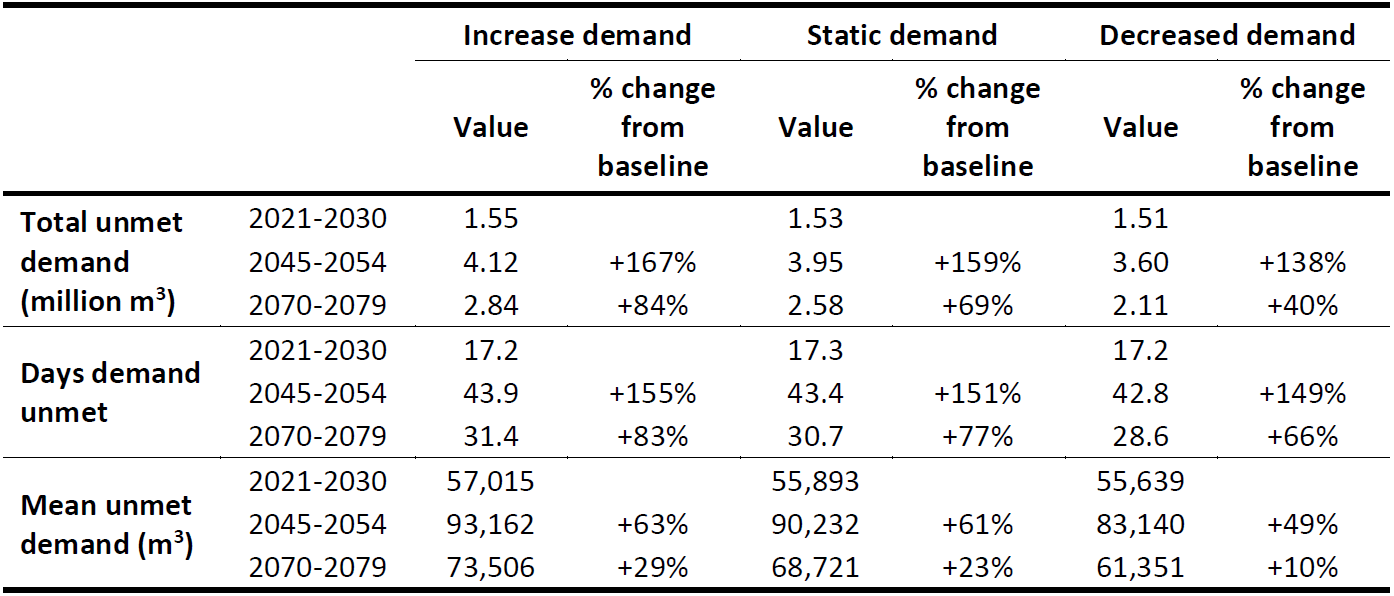Water Demand Impacts
Climate change is likely to impact directly on water demand in the region. In particular it is expected that higher temperatures and lower rainfall in summers will increase demand for water both domestically, as well as from sectors such as agriculture. In addition, lower temperature in winter may increase leakage due to frozen/burst pipes, thus increasing the pressure on the overall water supply-demand dynamic.
With this in mind we have sought to quantify overall future demand for public water supply and compare this to projected supplies. We have used a case study site to study this, namely, a public water supply abstraction on the Afon Tywi in south Wales. This site is a key public water supply abstraction for the water company, Dŵr Cymru Welsh Water, supplying some 400,000 people. We used historical daily abstraction data from this site as a proxy for total water demand from all sectors, as well as leakage. In combination with historical daily temperate data, we developed a relationship between temperature and overall water demand, allowing us to project future water demand based on future temperature projections. We also developed a further two future demand scenarios, one where demand is static at current levels, and one where demand decreases in-line with the water company projections.
Normalised monthly average temperate compared with normalised monthly total abstraction at public water supply abstractions in the Clwyd, Conwy, Dyfi, Teifi and Tywi catchments, in Wales. Paired comparison on the left, with black dashed lines representing trend direction; time series comparison on the right. Abstraction data provided by Dŵr Cymru Welsh Water.
Using all three sets of demand projections, as well as future streamflow projections developed previously (more information here), we have been able to analyse the future water supply-demand balance for the case study abstraction site. Our results suggest that under all three scenarios future the number of days per year when supply will be insufficient to satisfy demand will increase, as will the volume of total unmet demand per year. These changes are driven by large increases in unmet demand in summer and autumn in particular. These results could have important implications for future availability and the adaptation measures required to ensure that supply is greater than demand in the future.
The work presented here forms part of a paper published in the journal Water, which is available for free and open access at the following link: https://doi.org/10.3390/w12061684.
Percentage change in annual public water supply unmet demand characteristics when comparing near (2045-2054) and far (2070-2079) future decadal averages with a baseline decade of 2021-2030.


